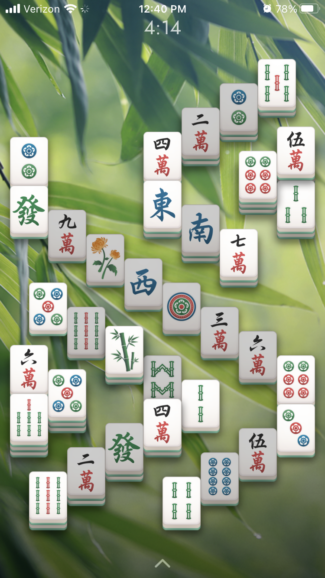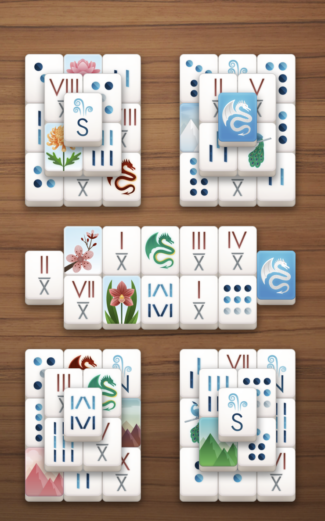The Case of the Golden Idol
LQ: 9.85
Recommended Age: 12+
Skills Used: Focus, Working Memory, Mathematics, Reading
 Brainium Mahjong is a puzzle game in which the player completes a solo tile puzzle by matching like pieces together until the board is empty. Pieces either need to have direct matches, as is the case of numbers and patterns, or can be flexible like tiles featuring flowers or seasons. Tiles that are in between two other tiles cannot be accessed so matches can only be made with ones that are on the right or left of the board.
Brainium Mahjong is a puzzle game in which the player completes a solo tile puzzle by matching like pieces together until the board is empty. Pieces either need to have direct matches, as is the case of numbers and patterns, or can be flexible like tiles featuring flowers or seasons. Tiles that are in between two other tiles cannot be accessed so matches can only be made with ones that are on the right or left of the board.
Each Brainium Mahjong puzzle is winnable, meaning that if the player encounters a “dead end” in the puzzle, they can use the undo slider at the bottom of the screen to move back several moves or to the beginning where they can try again. Each puzzle is timed so players can compare their past scores against their newest attempts at each puzzle.
As the player moves through puzzles, they gain levels and access to additional types of tiles, backgrounds, and board layouts.
Brainium Mahjong is now available for iOS.
 Flexibility: Adapting and adjusting to changing conditions and expectations.
Flexibility: Adapting and adjusting to changing conditions and expectations.
The layout of the Mahjong board and the combination of the tiles changes with each new game, meaning that the player needs to use their flexibility skills to see matches each time they encounter a new puzzle. Players who struggle with flexibility may find themselves struggling to find matches when a puzzle changes layouts or a new set of tiles is put down. To increase flexibility skills, these players can use the “undo” slider at the bottom of the screen to go back several moves or to the beginning of the puzzle to start again. In this way, they can see where they made a mistake and correct it.
Time Management: Working under pressure.
Each level of Brainium Mahjong is timed and the player can see how long it took them to complete their puzzle when they have finished. They can then compare their scores with their previous ones, creating a sense of urgency to complete the puzzle as quickly as they can without running into a dead end scenario which would require going back several moves. For players who really want to work under pressure, the time clock can even be added to the mahjong board so that players can see how long it is taking them to make tile matches while they are still solving the puzzle. For players who struggle with working under pressure, setting the timer up on the main screen and trying several simple puzzles can help them become accustomed to working with a visible timer so that they become more comfortable with the idea of making matches while being timed.
All membership plans come with full access to our entire suite of tools learning guides, and resources. Here are a few of the ones we think you’ll like the most: